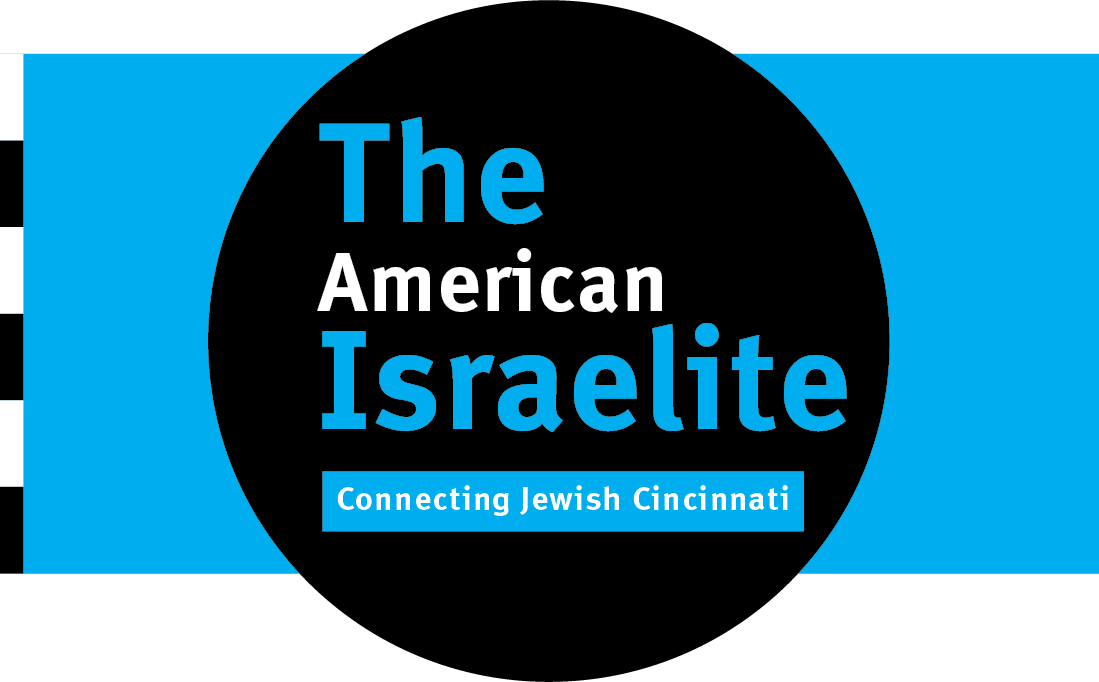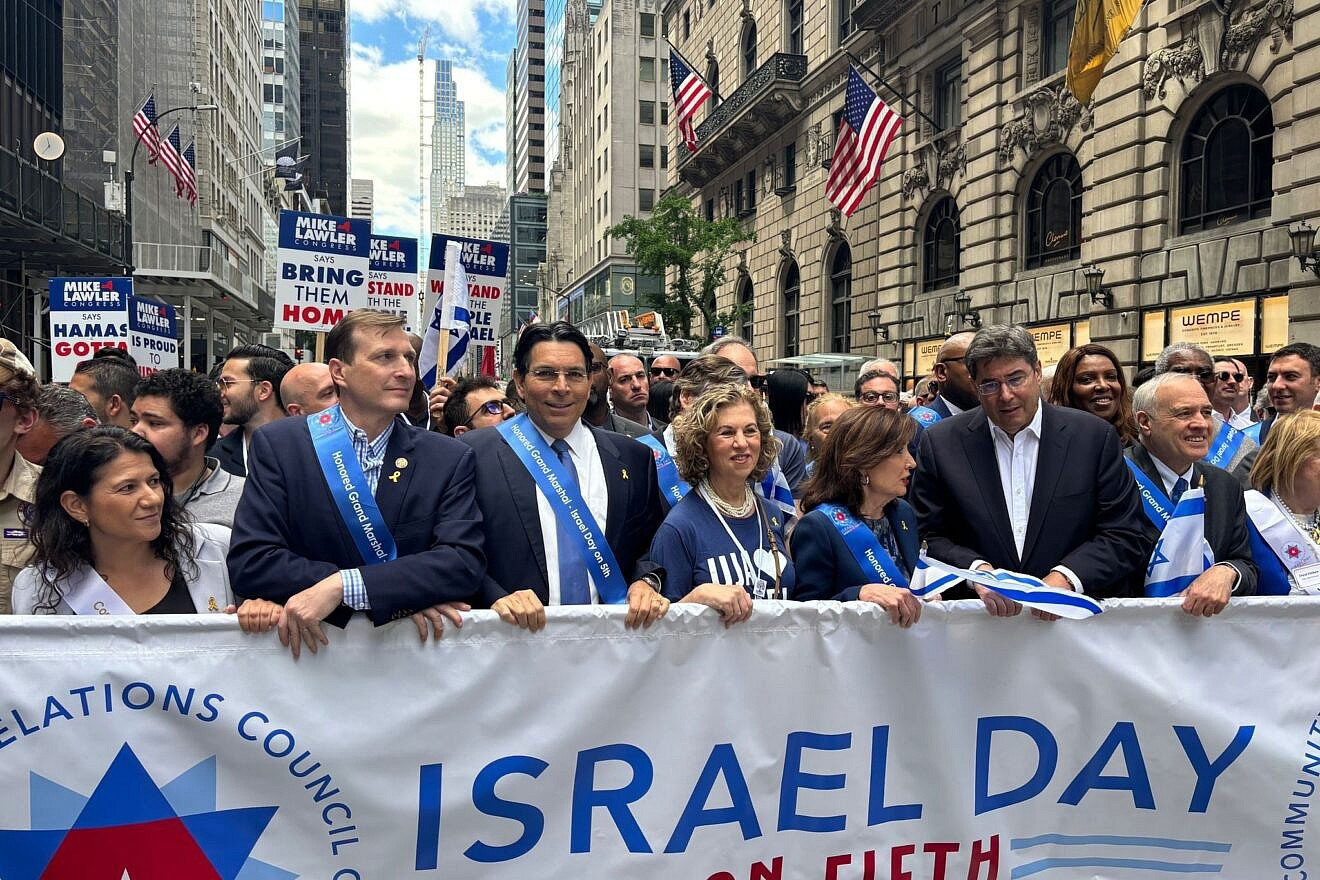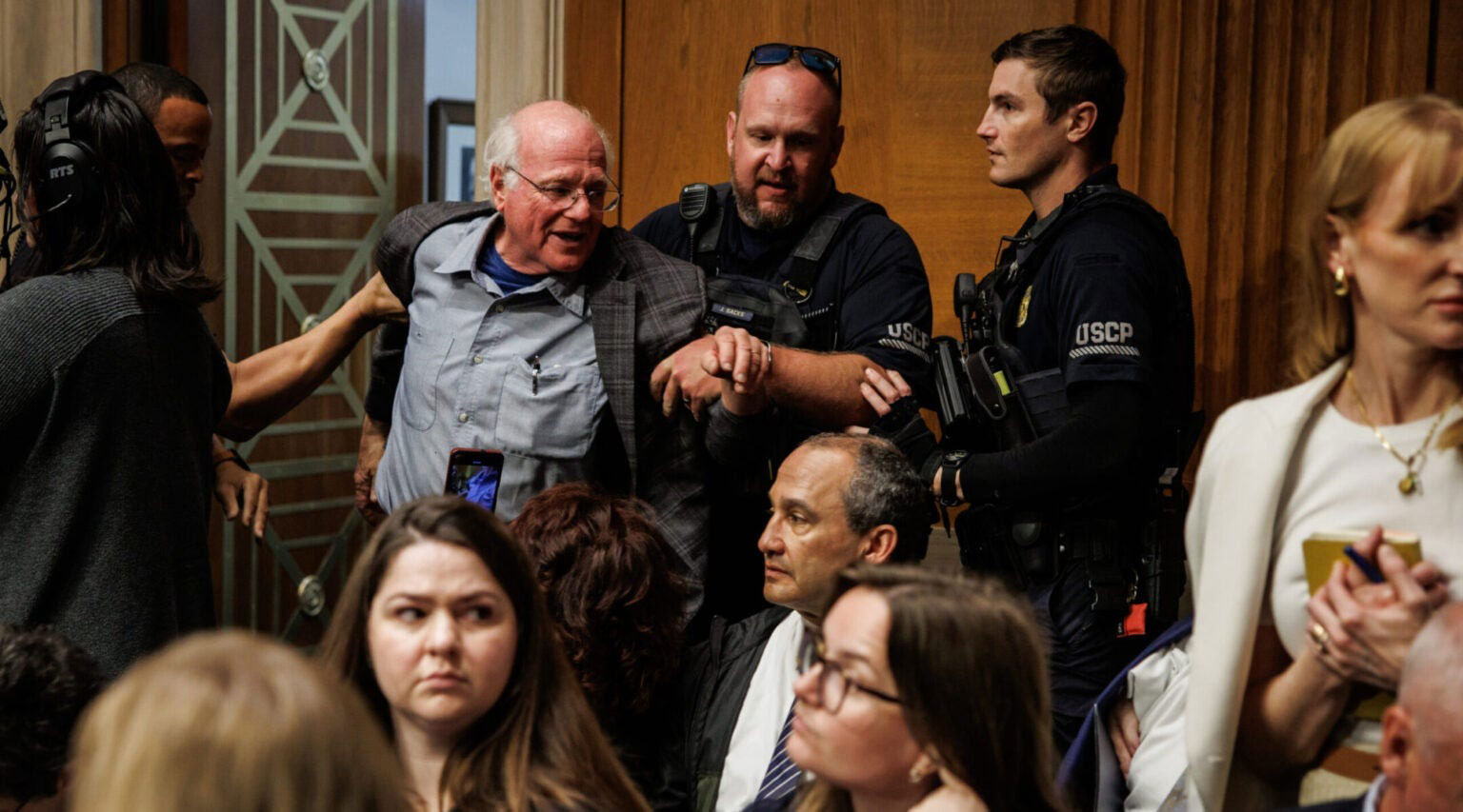
Police tape surrounds an assault rifle magazine in the aftermath of a mass shooting at the Tree of Life synagogue in Pittsburgh, Oct. 18 2018
(JTA) — Testifying at the trial of the Pittsburgh synagogue shooter, Carol Black described how, right before he opened fire, she had taken her yarmulke and tallis out of her velvet tallis bag.
But first, she had to explain what a yarmulke, tallis and tallis bag were.
“In my briefcase is a blue velvet bag that has a zipper on it,” she said. “I have a Ziploc bag of yarmulkes I would wear and a tallis I would wear.” A yarmulke was a “head covering,” she explained, and a tallis was a “prayer shawl.” The items, she said, “just signified being in the presence of G_d and being respectful.”
Black, 71, was the second witness to testify on Wednesday, the second day of the capital murder trial of the alleged gunman, Robert Bowers. She was one of a few witnesses who interspersed heart-rending testimony about the trial with, effectively, a crash course on Jewish ritual.
Black recalled how she sat in the second seat in from the aisle, because the aisle seat was where her brother Richard Gottfried sat, and they shared gabbai duties. Then Black explained the role of a “gabbai” — calling congregants to the Torah and helping them read through a passage. She described Pesukei d’Zimra, the morning service’s opening prayers, and spelled out the Hebrew name of the morning service, Shacharit, for the court reporter.
“I had just started to open the bag and I heard a loud bang,” she said. “To me it sounded like somebody had dropped a table on the metal floor.”
She added, “The first two sounds, I didn’t recognize them as gunfire. You don’t go to a synagogue and expect to hear gunfire.”
The focus of the trial is the gunfire — the shooting on Oct. 27, 2018 that killed 11 Jews praying at three congregations: Tree of Life, New Light and Dor Hadash. But for the prosecution, explaining the synagogue — and the practices that take place in it — is also proving to be crucial. The painful collision on that Shabbat morning of the sacred and the profane is key to the prosecution’s case that the defendant merits the death penalty.
Of the 63 federal charges Bowers is facing, 22 are capital crimes: two for each of the 11 fatalities that morning, including Black’s brother, Richard Gottfried. One is “obstruction of free exercise of religious beliefs resulting in death” and the other is murder, enhanced with a hate crime charge. So prosecutors, seeking to show that the shooting was motivated by antisemitism, are probing witnesses about their Judaism and how they express it.
“As they did every Saturday, men and women of the Jewish faith made their way to the synagogue, to observe Shabbat,” Assistant U.S. Attorney Soo Song said in her opening statement on Tuesday. “To pray to God in the sanctity and refuge of their shared Jewish faith.”
Conversely, defense lawyer Judy Clarke is out to prove that her client targeted the congregants not because of their religion per se but because of a delusion that they were facilitating an immigration invasion to replace whites. Both she and prosecutors have said in court that he committed the attack.
Clarke occasionally objected when the testimony veered into how American Jews worship, or into explaining what animates Jewish practice. None of her objections to explaining Judaism were sustained — including one where she had tried to preempt the director of one of the congregations’ religious schools from explaining its educational precepts.
Describing the curriculum, Wendy Kobee, the director of the religious school of Dor Hadash, a Reconstructionist congregation, said, “Religious prayers, religious practices, cultural values.”
“Among the cultural values taught at the school was the concept of welcoming the stranger?” prosecutor Mary Hahn asked.
“Yes, that would have been incorporated into the curriculum in an age-appropriate way,” Kobee said.
Both the defense and prosecution acknowledge that the defendant, a white supremacist, targeted the building because Dor Hadash had partnered with HIAS, the Jewish refugee aid group, to celebrate what the group called National Refugee Shabbat.
The trial is shaping up as a seminar on American Jewish tradition. Witnesses have provided the judge, jury and spectators with an impromptu glossary of Jewish terms, and an introduction to parts of modern Jewish thought. Dan Leger, a member of Dor Hadash who was injured in the attack, outlined the teachings of the Reconstructionist movement’s founder, Rabbi Mordecai Kaplan.
Kaplan’s “approach is one of looking at the Bible, the Torah specifically as something that guides our life in ways that give value in social interaction,” Leger said. “One of the ways it is most highly demonstrated is welcoming those into the community who need assistance, who need support whether or not they are Jewish, welcoming immigrants into the country.”
Prosecutors also asked witnesses about Jewish practice in order to explain what happened on the day of the shooting. Song asked Leger to explain tallit katan, the small prayer shawl colloquially known as tzitzit that observant men traditionally wear under their clothing, and why he did not have a cell phone handy when the gunman opened fire. It was Shabbat, when some Jews abstain from using electronic devices, he explained.
Another prosecutor asked Barry Werber, who testified later, why he preferred to attend services at New Light on Friday night and for Sunday breakfasts and not on Saturdays. He liked to sleep in on Saturdays, he said, but he went to services on the morning of the shooting because he felt obliged to honor his mother on her yahrzeit. He explained that a yahrzeit was the anniversary of someone’s death.
Like Tree of Life’s rabbi, Jeffrey Myers, had on Tuesday, Leger testified that he recited the Shema when he believed he was dying, after the gunman shot him in the abdomen. He translated the Torah verse and central Jewish prayer for the jury. Leger, a retired registered nurse, and another Dor Hadash congregant, Jerry Rabinowitz, a physician, had run into the shooting to help the injured. Rabinowitz was killed.
“I thought about the wonder of my life, the beauty of it all, the happiness I had experienced, the joy of having two beautiful sons and a wonderful wife and the wife previous to that wife, all the wonderful friends I have in the world,” Leger said. “I prayed for forgiveness for those who I have wronged in my life. I was ready to go.”
The defendant, wearing a dark blue sweater and a light blue collared shirt, his arms folded, stared at Leger.
The stories on the witness stand offered windows into American Jewish families and history. Gottfried started attending New Light after his mother died in 1992, Black testified about her brother, but she said she remained uninterested in frequent synagogue attendance until she injured a hip running about a decade ago. Gottfried, who was younger, encouraged her to come to services, and she celebrated her bat mitzvah as an adult.
“In Uniontown [Pennsylvania] where I grew up, in our Conservative congregation, which incidentally was called Tree of Life, girls did not get bat mitzvahed,” she said.
Black and Werber both discussed the social aspect of Shabbat services, describing the propensity of Melvin Wax, a New Light congregant, to tell jokes. Werber recalled that just before the shooting, Wax was telling jokes to Cecil Rosenthal.
Yet along with descriptions of how ritual and prayer bound the synagogue communities together, the testimonies all came back to the horrific details of the shooting itself.
After sitting with Wax, Werber said, Rosenthal went back upstairs, where the gunman shot him multiple times. Down in the New Light sanctuary, Rabbi Jonathan Perlman led Werber, Wax and Black into a storeroom behind the bimah. Richard Gottfried was in an adjacent kitchen with another New Light congregant, Dan Stein, preparing breakfast for the next morning. He called 911.
The gunman came down the stairs and killed Gottfried and Stein. There was a pause, so Wax peeked out of the storeroom to see what was happening. The gunman shot him twice, and he fell at Black’s feet. The gunman hovered a while in the area and then retreated.
Eventually, emergency responders found the group hidden in the store room. Wax’s body still lay there.
“I had to step over him to get past him,” Black testified, her voice cracking. “Quietly to myself I said goodbye to him and followed the officers.”




